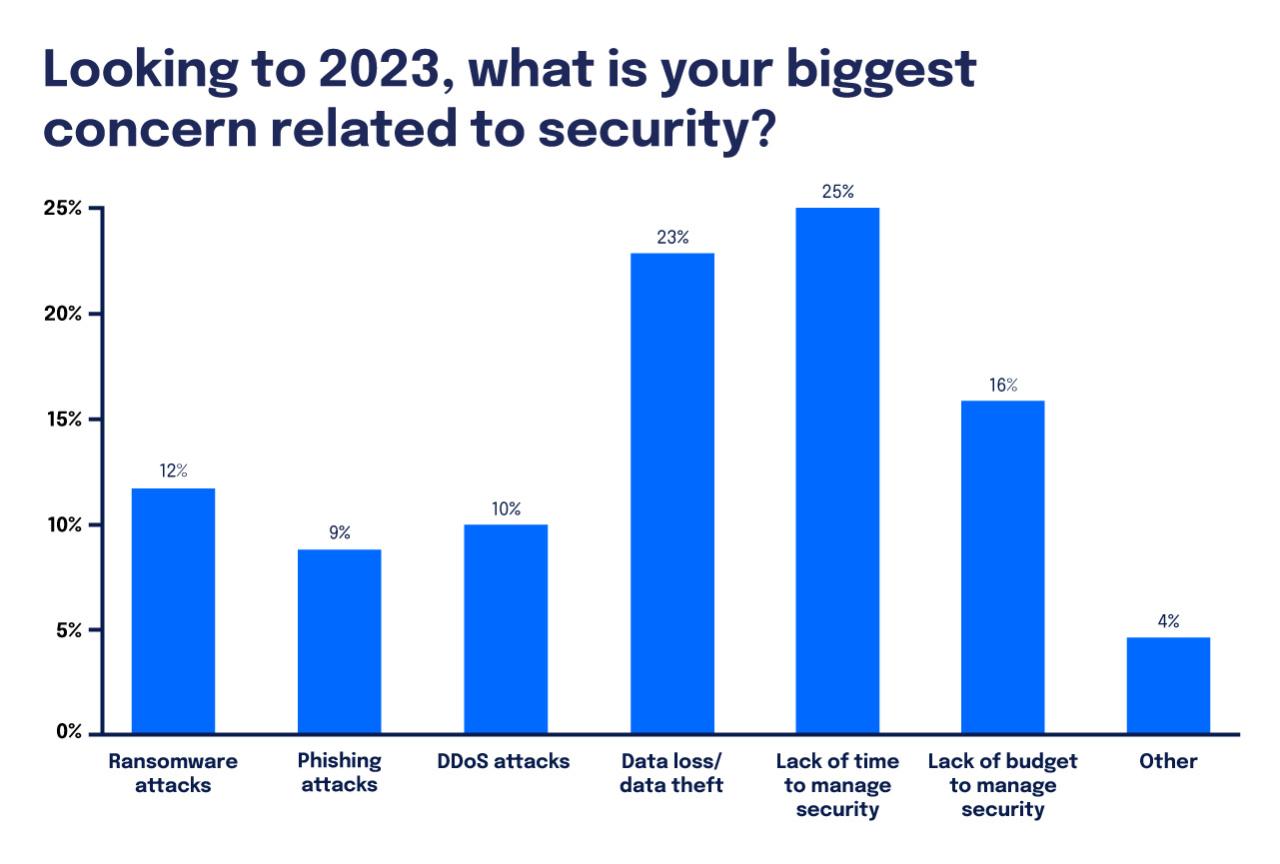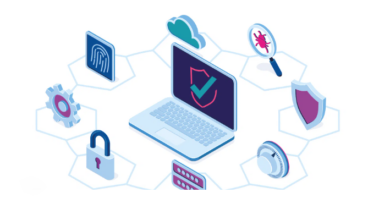
Insider Threats Human Error & Cybersecurity
Insider threats why human error is your biggest cybersecurity risk and how to address it – Insider threats: why human error is your biggest cybersecurity risk and how to address it – that’s the chilling reality facing businesses today. We all know that sophisticated hacking attempts make headlines, but the truth is, often the biggest security breaches aren’t caused by malicious outsiders, but by well-meaning employees making mistakes. From accidentally clicking a phishing link to leaving sensitive data unprotected, human error opens the door to devastating consequences.
This post dives deep into understanding why this happens, the psychological factors at play, and most importantly, how we can prevent these breaches before they occur. Let’s explore the strategies and best practices that can significantly reduce your organization’s vulnerability to insider threats.
Defining Insider Threats and Human Error
Insider threats represent a significant, often underestimated, cybersecurity risk. They stem from individuals with legitimate access to an organization’s systems and data, who either intentionally or unintentionally compromise security. Understanding the nuances of insider threats, particularly the role of human error, is crucial for effective risk mitigation.
Insider threats encompass a broad spectrum of actions, ranging from accidental data leaks to deliberate sabotage. Malicious insiders actively seek to harm the organization, often motivated by financial gain, revenge, or ideology. Unintentional threats, however, are far more common and often stem from negligence, lack of awareness, or simple mistakes. The consequences, however, can be equally devastating.
Types of Insider Threats
Categorizing insider threats helps in understanding their diverse nature and implementing targeted preventative measures. Malicious insiders might engage in data theft, espionage, sabotage, or the introduction of malware. Unintentional actions, on the other hand, frequently involve accidental data disclosure, weak password practices, phishing susceptibility, or simply failing to follow established security protocols.
Common Human Errors Contributing to Cybersecurity Breaches
Human error is the root cause of a significant portion of cybersecurity incidents. Understanding the common types of errors and their impact is essential for developing effective mitigation strategies.
| Error Type | Description | Example | Mitigation Strategy |
|---|---|---|---|
| Phishing Susceptibility | Falling prey to phishing scams, revealing credentials or downloading malware. | An employee clicks on a malicious link in an email, granting attackers access to their account. | Regular security awareness training, robust email filtering, and multi-factor authentication. |
| Weak Password Practices | Using easily guessable passwords or reusing passwords across multiple accounts. | An employee uses “password123” for their work account, making it vulnerable to brute-force attacks. | Enforcing strong password policies, password managers, and regular password changes. |
| Accidental Data Disclosure | Unintentionally sharing sensitive data through email, cloud storage, or physical media. | An employee sends a confidential client list to the wrong email address. | Data loss prevention (DLP) tools, secure file sharing protocols, and comprehensive data security policies. |
| Failure to Follow Security Protocols | Ignoring or neglecting established security procedures and guidelines. | An employee leaves their computer unlocked and unattended, allowing unauthorized access. | Clear security policies, regular audits, and consistent enforcement of security best practices. |
Real-World Examples of Human Error Leading to Data Breaches
Numerous high-profile data breaches highlight the devastating consequences of human error. These incidents underscore the critical need for robust security awareness training and preventative measures.
For example, the Target data breach in 2013, while involving a sophisticated malware attack, was significantly exacerbated by the failure of employees to properly secure their credentials, allowing attackers to gain access to the network. Similarly, the Yahoo! data breaches, spanning several years, involved compromised employee credentials, highlighting the importance of strong password management and security awareness training. These cases demonstrate that even sophisticated organizations are vulnerable to breaches stemming from seemingly simple human errors.
The Psychology of Human Error in Cybersecurity
Human error is the Achilles’ heel of any cybersecurity system, no matter how robust the technology. Understandingwhy* people make mistakes in the context of cybersecurity is crucial to building effective defenses. This involves delving into the psychological factors that influence our decision-making processes, making us susceptible to attacks. By recognizing these vulnerabilities, we can develop strategies to mitigate the risks and strengthen our overall security posture.Cognitive biases significantly impact our ability to make sound security judgments.
These mental shortcuts, while often helpful in daily life, can lead us astray when faced with sophisticated cyber threats. They distort our perception of risk and influence our actions, increasing our vulnerability to social engineering attacks.
Cognitive Biases and Social Engineering
Cognitive biases are systematic patterns of deviation from norm or rationality in judgment. They create vulnerabilities that malicious actors exploit. For instance, confirmation bias—the tendency to favor information confirming pre-existing beliefs—makes us more likely to trust phishing emails that align with our expectations. Similarly, the anchoring bias—over-reliance on the first piece of information received—can make us accept seemingly legitimate requests without proper verification.
Social engineers skillfully manipulate these biases, crafting believable scenarios that prey on our cognitive shortcuts. They might leverage authority bias (trusting figures of authority) or scarcity bias (reacting to limited-time offers) to trick individuals into divulging sensitive information or performing actions that compromise security.
Stress, Fatigue, and Time Pressure, Insider threats why human error is your biggest cybersecurity risk and how to address it
The impact of stress, fatigue, and time pressure on cybersecurity practices is substantial. When stressed, individuals are more prone to making careless mistakes, such as clicking on suspicious links or overlooking security protocols. Fatigue impairs judgment and concentration, reducing our ability to identify and respond to threats effectively. Time pressure forces rushed decisions, increasing the likelihood of overlooking critical details or bypassing security measures.
These factors combine to create a perfect storm for human error, making individuals more susceptible to phishing scams, malware infections, and other cyberattacks. Imagine a busy employee working late, tired after a long day, receiving an urgent email that seems to come from their manager. Under pressure to respond quickly, they might overlook the subtle inconsistencies in the email’s formatting or sender address, ultimately falling victim to a phishing attempt.
A Hypothetical Scenario: The Compromised Database
Let’s consider a scenario involving Sarah, a database administrator for a mid-sized company. Sarah is known to be a diligent worker, but she’s also been under significant pressure lately due to an upcoming project deadline and recent personal issues. A sophisticated social engineering attack begins with a seemingly innocuous email. The email appears to be from her IT manager, requesting immediate access to the company’s database to fix a critical system error.
The email contains a link to a seemingly legitimate website, which is actually a cleverly designed phishing site. Due to her stress and fatigue, Sarah doesn’t notice the slight discrepancies in the email address or the website’s URL. She clicks the link, unknowingly providing her credentials to the attackers. This combination of human error (failing to verify the email and website) and social engineering (a convincing email designed to exploit her stress and time constraints) allows the attackers to gain unauthorized access to the sensitive company database, potentially resulting in a significant data breach.
Technical Measures to Mitigate Insider Threats: Insider Threats Why Human Error Is Your Biggest Cybersecurity Risk And How To Address It
Insider threats, driven largely by human error, represent a significant cybersecurity risk. While addressing the psychological factors contributing to these errors is crucial, implementing robust technical measures is equally vital in mitigating the potential damage. These measures act as a safety net, reducing the impact of mistakes and preventing malicious actions from succeeding.
Insider threats, driven by human error, are a massive cybersecurity headache. We often overlook the role of poorly designed or insecure applications in these breaches. Improving security starts with better application development, and that’s where exploring options like domino app dev the low code and pro code future becomes crucial. By focusing on secure coding practices from the outset, we can significantly reduce the risk of human error leading to devastating data leaks.
Access Control and Privilege Management Best Practices
Effective access control and privilege management are cornerstones of a strong security posture. Limiting access to only what’s necessary, based on the principle of least privilege, significantly reduces the potential damage from compromised accounts or accidental data breaches. Implementing these practices requires careful planning and ongoing monitoring.
- Implement strong password policies: Enforce complex passwords with length requirements, character diversity, and regular changes. Consider using password managers to assist users.
- Employ role-based access control (RBAC): Assign permissions based on job roles, ensuring that individuals only have access to the data and systems required for their duties. This minimizes the impact of a compromised account.
- Regularly review and revoke access: Periodically audit user access rights, removing permissions for employees who have left the company or changed roles. This prevents unauthorized access to sensitive information.
- Utilize multi-factor authentication (MFA): Require multiple forms of authentication to verify user identity, adding an extra layer of security against unauthorized access, even if passwords are compromised. (See the section below for details on MFA methods.)
- Implement access control lists (ACLs): Use ACLs to finely control access to specific files, folders, and systems. This allows for granular control over data access, limiting the potential for data breaches.
- Regular security awareness training: Educate employees on the importance of access control and the risks associated with sharing passwords or neglecting security protocols. This helps foster a culture of security awareness.
Data Loss Prevention (DLP) Tools
Data Loss Prevention (DLP) tools provide an automated way to identify and prevent sensitive data from leaving the organization’s control. These tools monitor data in motion (e.g., email, file transfers) and data at rest (e.g., databases, storage devices), flagging suspicious activity and preventing unauthorized exfiltration. They can be configured to recognize specific data types (e.g., credit card numbers, social security numbers) and trigger alerts or block transfers based on predefined policies.
Effective DLP implementation requires careful configuration and integration with existing security systems. For example, a DLP system might block an email containing a sensitive document from being sent to an unauthorized external recipient, or it might prevent a USB drive from copying sensitive data.
Multi-Factor Authentication (MFA) Methods
Multi-factor authentication (MFA) adds an extra layer of security by requiring users to provide multiple forms of authentication before accessing systems or data. This significantly reduces the risk of unauthorized access, even if one factor (like a password) is compromised.
- Password + One-Time Password (OTP): This common method uses a password combined with a time-sensitive code generated by an authenticator app (like Google Authenticator or Authy) or a physical security token. This adds a second factor of authentication beyond just knowing the password.
- Password + Biometrics: This approach combines a password with biometric authentication, such as fingerprint scanning, facial recognition, or iris scanning. Biometric data provides a unique and difficult-to-replicate second factor.
- Password + Security Questions: While less secure than other methods, this approach uses a password along with answers to pre-defined security questions. The questions should be personalized and difficult for others to guess.
- Hardware Tokens: These physical devices generate one-time passwords or other authentication codes. They offer a high level of security as they are difficult to clone or replicate.
- Push Notifications: Many MFA systems now use push notifications sent to a registered device (e.g., smartphone). The user simply approves or denies the authentication request via the app. This is often considered a more user-friendly approach.
Procedural and Training Measures to Mitigate Insider Threats
Human error is the leading cause of cybersecurity breaches, and insider threats, whether intentional or accidental, significantly contribute to this problem. Implementing robust procedural and training measures is crucial to minimize this risk and build a more secure organizational environment. These measures should focus on proactive education, clear guidelines, and a well-defined incident response plan.
A multi-faceted approach is needed, encompassing comprehensive training programs, detailed incident response procedures, and stringent policies regarding device usage and data handling. This approach will equip employees with the knowledge and tools to navigate cybersecurity risks effectively, minimizing the likelihood of human error leading to a security incident.
Employee Cybersecurity Awareness Training Program
A comprehensive employee training program is the cornerstone of a strong cybersecurity posture. Regular, engaging training helps employees understand their role in protecting company data and resources. The program should be tailored to different roles and responsibilities within the organization, ensuring relevance and effectiveness.
- Module 1: Introduction to Cybersecurity Risks: This module will cover fundamental cybersecurity concepts, including different types of threats, vulnerabilities, and the impact of human error. It will also highlight the importance of individual responsibility in maintaining a secure environment.
- Module 2: Phishing and Social Engineering Awareness: This module focuses on recognizing and avoiding phishing attempts, social engineering tactics, and other forms of malicious communication. Real-world examples of phishing emails and successful social engineering attacks will be used to illustrate the techniques used by attackers.
- Module 3: Password Security and Best Practices: This module will cover creating strong, unique passwords, implementing multi-factor authentication (MFA), and avoiding password reuse. It will emphasize the importance of password hygiene and the consequences of weak passwords.
- Module 4: Secure Data Handling and Storage: This module will cover proper procedures for handling sensitive data, including encryption, access control, and data loss prevention (DLP) measures. It will also address secure data storage practices, both on company devices and personal devices.
- Module 5: Reporting Security Incidents: This module emphasizes the importance of reporting any suspected security incidents promptly and accurately. It provides clear guidelines on how to report incidents, including the appropriate channels and necessary information.
- Module 6: Acceptable Use Policy: This module covers the company’s acceptable use policy for technology resources, emphasizing the ethical and legal considerations of data handling and usage.
Incident Response Procedure for Suspected Insider Threats
A well-defined incident response procedure is crucial for handling suspected insider threats effectively. This procedure should Artikel clear steps for investigation, containment, and remediation, minimizing the impact of any potential breach.
- Detection: Establish monitoring systems to detect suspicious activity, including unusual login attempts, data access patterns, and file transfers.
- Investigation: Conduct a thorough investigation to determine the nature and extent of the incident, gathering evidence and identifying the involved parties.
- Containment: Immediately contain the threat by restricting access to affected systems and data. This may involve disabling accounts, isolating devices, or implementing network segmentation.
- Eradication: Remove the threat from the system, restoring data to a secure state and patching any vulnerabilities.
- Recovery: Restore affected systems and data to operational status, ensuring business continuity.
- Post-Incident Activity: Conduct a post-incident review to identify lessons learned and improve security measures to prevent future incidents. This may involve updating policies, procedures, or training programs.
Policy for Secure Device Usage and Data Handling
A comprehensive policy outlining secure device usage and data handling is vital for mitigating insider threats. This policy should cover all aspects of data security, from password management to data encryption and device security.
This policy should clearly state acceptable use of company devices, personal devices used for work, and the handling of sensitive data both on and off company premises. It should also Artikel consequences for violations of the policy. For example, the policy should explicitly prohibit the use of unauthorized software, the storage of sensitive data on unencrypted devices, and the sharing of credentials.
Regular review and updates to this policy are essential to reflect evolving threats and technologies.
The Role of Security Culture and Awareness

A strong security culture isn’t just a checklist item; it’s the bedrock of effective insider threat mitigation. When employees understand and value cybersecurity, they become active participants in protecting the organization, rather than unwitting contributors to breaches. Cultivating this culture requires a multi-faceted approach encompassing education, communication, and a demonstrable commitment from leadership.Building a robust security culture requires a concerted effort to change mindsets and embed security awareness into the daily routines of every employee.
This involves more than just annual training sessions; it’s about creating a continuous feedback loop where security is consistently reinforced and valued. Employees need to feel empowered to report potential threats without fear of reprisal, understanding that security is everyone’s responsibility.
Promoting a Security-Conscious Culture
Creating a security-conscious culture involves leadership buy-in, consistent messaging, and clear communication channels. Senior management must actively champion security initiatives, demonstrating their commitment through both words and actions. This includes allocating sufficient resources for training, tools, and incident response, as well as consistently reinforcing the importance of security in all company communications. Regular security awareness campaigns, integrated into existing communication channels, will help keep security top-of-mind.
Improving Employee Awareness of Cybersecurity Risks and Responsibilities
Effective cybersecurity awareness training goes beyond simply ticking boxes. It needs to be engaging, relevant, and tailored to the specific roles and responsibilities of employees. Interactive modules, scenario-based training, and gamified learning can significantly improve knowledge retention and engagement compared to passive methods like reading lengthy documents. Regular refresher courses and targeted training for specific threats (like phishing scams or social engineering) are crucial to maintain a high level of awareness.
For example, training could simulate phishing attacks, allowing employees to experience firsthand the techniques used and the importance of vigilance. This hands-on approach significantly improves learning outcomes compared to passive lectures.
Effective Communication Strategies for Security Information
Clear, concise, and consistent communication is vital for disseminating security information effectively. Avoid technical jargon and opt for plain language that everyone can understand. Use multiple communication channels, including email newsletters, intranet articles, posters, and even short videos, to reach a wider audience. Regular security bulletins that highlight current threats and best practices can help keep employees informed and engaged.
Storytelling, using real-world examples of security incidents (without revealing sensitive details), can make security information more relatable and memorable. For example, a short video depicting a successful phishing attack and its consequences would be far more impactful than a simple email about phishing awareness. Furthermore, establishing clear reporting procedures and ensuring that all reports are investigated promptly and fairly fosters trust and encourages employees to proactively report suspicious activity.
Monitoring and Detection of Insider Threats
Effective monitoring and detection are crucial for mitigating the risks posed by insider threats. Without proactive surveillance, malicious or negligent actions can go unnoticed for extended periods, leading to significant data breaches, financial losses, and reputational damage. A layered approach combining various monitoring techniques and robust analysis tools is essential for early identification and response.
Monitoring user activity involves tracking various actions performed within the organization’s IT infrastructure. This includes access attempts, file modifications, data transfers, and system configurations. The goal is to establish a baseline of normal behavior for each user and then identify deviations that might indicate malicious or negligent activity. Sophisticated monitoring systems can correlate seemingly innocuous events to uncover hidden patterns of suspicious behavior.
For example, repeated attempts to access sensitive data outside of normal working hours, combined with unusual data transfer volumes, could raise a red flag.
Log Analysis and SIEM Systems
Log analysis and Security Information and Event Management (SIEM) systems are cornerstone technologies in insider threat detection. Log files generated by various system components – servers, applications, network devices – record a wealth of information about user activity and system events. Analyzing these logs for anomalies is a powerful method for identifying suspicious behavior. SIEM systems aggregate and correlate logs from diverse sources, providing a unified view of security events across the organization.
This allows security analysts to identify patterns and relationships that would be difficult to spot by analyzing individual log files. For instance, a SIEM system might detect an unusual pattern of login attempts from an unfamiliar location followed by access to sensitive files, triggering an alert for further investigation. Effective SIEM implementation requires careful configuration, data normalization, and the development of robust alert rules based on known attack patterns and organizational-specific baselines.
Visual Representation of Insider Threat Detection Stages
Imagine a flowchart. The first box is labeled “User Activity Monitoring.” Arrows branch from this box to three subsequent boxes: “Baseline Establishment,” “Anomaly Detection,” and “False Positive Filtering.” The “Baseline Establishment” box shows the process of establishing normal user behavior patterns using historical data. From “Anomaly Detection,” arrows lead to two boxes: “Suspicious Activity Identified” and “No Suspicious Activity.” The “Suspicious Activity Identified” box is connected to another box: “Investigation and Response.” The “Investigation and Response” box branches to “Incident Confirmed” and “False Alarm.” “Incident Confirmed” leads to a final box: “Remediation and Prevention.” The “False Alarm” box loops back to the “Anomaly Detection” box.
The overall flow shows a continuous cycle of monitoring, anomaly detection, investigation, and response, with a mechanism for filtering false positives. The flowchart visually demonstrates the iterative nature of insider threat detection and response, highlighting the importance of continuous monitoring and investigation.
Legal and Ethical Considerations
Navigating the complex landscape of insider threats requires a thorough understanding of the legal and ethical implications. Data breaches caused by malicious or negligent insiders can result in significant financial losses, reputational damage, and legal repercussions for organizations. Balancing the need for robust security measures with employee privacy rights is a crucial ethical challenge.The legal ramifications of insider threats and data breaches are substantial and multifaceted.
Organizations face potential lawsuits from affected individuals, regulatory fines, and criminal prosecution depending on the severity and nature of the breach. Laws like the GDPR in Europe and CCPA in California impose strict requirements for data protection and notification of breaches. Failure to comply can lead to significant penalties. Moreover, the type of data compromised (e.g., personally identifiable information, financial data, intellectual property) significantly influences the severity of the legal consequences.
For instance, a breach exposing sensitive health information under HIPAA could trigger hefty fines and legal action.
Legal Ramifications of Insider Threats and Data Breaches
Organizations must adhere to various data protection laws and regulations, varying by jurisdiction. These laws dictate how organizations must handle sensitive data, including its collection, storage, processing, and protection from unauthorized access. Failure to comply can result in substantial fines, legal action from affected parties, and damage to reputation. A company’s liability extends to both intentional and negligent acts by employees leading to data breaches.
Comprehensive incident response plans, including thorough investigation and timely notification procedures, are critical in mitigating legal risks. Regular security audits and employee training on data protection regulations are essential proactive measures.
Ethical Considerations Related to Employee Monitoring and Data Privacy
Balancing the need for security with employee privacy presents a significant ethical challenge. While monitoring employee activity can help detect and prevent insider threats, it must be done ethically and transparently. Excessive or intrusive monitoring can lead to employee distrust, decreased morale, and potential legal challenges. Organizations should establish clear policies that Artikel the types of monitoring conducted, the reasons for it, and how the collected data will be used.
Employee consent, where feasible, should be obtained. Data minimization and purpose limitation principles should be followed, meaning only necessary data should be collected and used solely for the purpose stated. Regular review and auditing of monitoring practices are crucial to ensure ethical compliance.
Key Elements of a Comprehensive Insider Threat Policy
A comprehensive insider threat policy is essential for mitigating risks and ensuring compliance with relevant regulations. This policy should clearly define what constitutes an insider threat, outlining both malicious and negligent actions. It should establish procedures for detecting, responding to, and investigating insider threats, including clear reporting mechanisms. The policy must address employee monitoring practices, ensuring they are lawful, ethical, and transparent.
It should specify data protection measures, including encryption, access controls, and data loss prevention (DLP) technologies. Finally, the policy should Artikel employee training requirements on security awareness, data protection, and acceptable use of company resources. Regular review and updates to the policy are crucial to reflect changes in technology, regulations, and best practices.
Last Word

So, while the threat of external attacks remains real, the human element is the wild card we need to master. By understanding the psychology behind human error, implementing robust technical and procedural safeguards, and fostering a strong security culture, we can significantly reduce the risk of insider threats. It’s not about eliminating human error entirely—that’s impossible—but about building a system that minimizes its impact and makes it far harder for malicious actors or simple mistakes to cause catastrophic damage.
Remember, a proactive approach, coupled with ongoing training and awareness, is your best defense against the silent threat lurking within your own organization.
Frequently Asked Questions
What’s the difference between a malicious and negligent insider threat?
A malicious insider actively seeks to harm the organization, often for personal gain (e.g., stealing data to sell). A negligent insider unintentionally causes damage through carelessness or lack of awareness (e.g., falling for a phishing scam).
Can insurance cover losses from insider threats?
Yes, many cyber insurance policies cover losses resulting from insider threats, but coverage varies. It’s crucial to review your policy carefully to understand what’s included and excluded.
How can I tell if I have an insider threat problem?
Look for unusual access patterns, unexplained data loss, violations of security policies, and unusual network activity. Regular security audits and monitoring tools can help identify potential issues.
What is the role of upper management in mitigating insider threats?
Upper management sets the tone for security culture. Their commitment to security awareness training, resource allocation for security measures, and consistent enforcement of policies are crucial for success.





